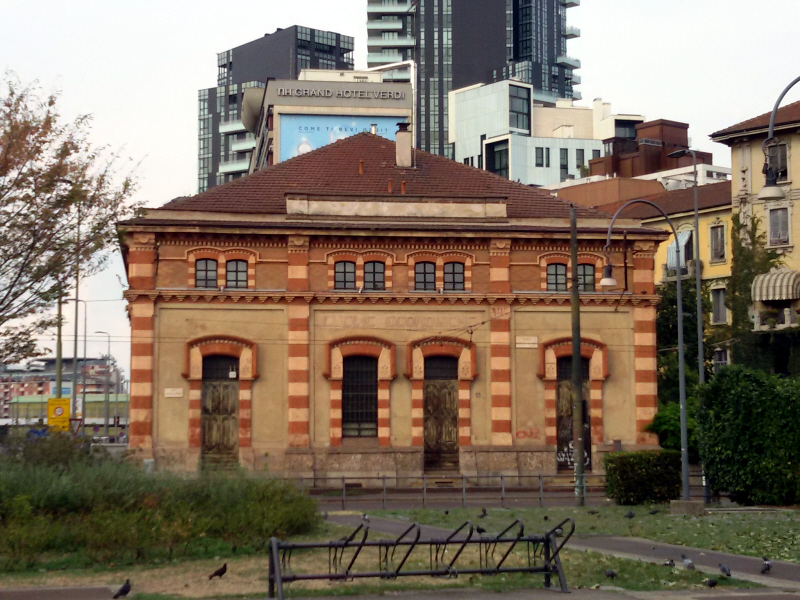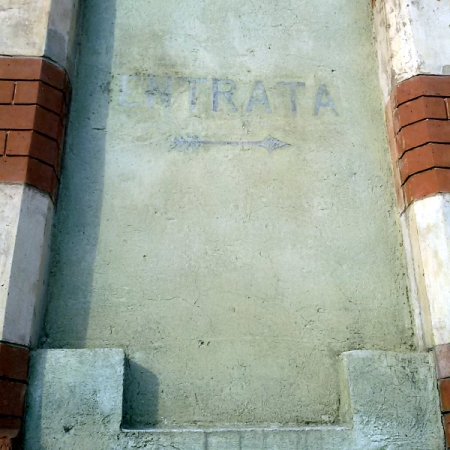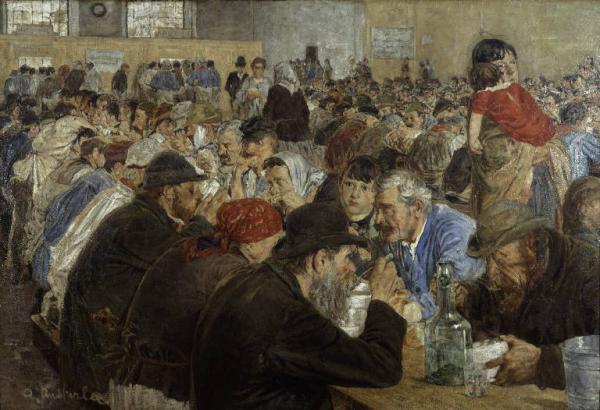In 1883 if you were poor in Milan there was a place where you could get a cheap meal or buy cheap bread. It was called Cucine Economiche: cheap kitchens.

In late 1800 in Milan, if you were a blue collar worker you could find yourself in a situation where you could not afford to feed your family. This is why in 1883 the Opera Pia Cucine Economiche had this building erected. The thrree wide doors allowed people to enter in a large communal room where they could buy themselves a cheap but healty meal. In the back, a bakery sold decent bread at fixed prices. On the top floor there were offices and an apartment used by the guardian and his family.
The cucine Economiche is a squat, square building in a Neoromanesque style. Architect Luigi Broggi chose for it local materials that were cheap and easy to use. The main trait of the building wasn’t looks but rather the rational plan of the three floors (basement included), which were perfectly suited to the Cucine Economiche purpose.
The location and how it changed

In the XIX century the area where the Cucine Economiche were located was a mainly blue collar one. It was teeming with cheap housing, some derelict, some the product of social initiatives aimed at making the life of poor families less uncomfortable, but also crowded with industries (like Helvetica, Grondona, or the Pirelli factory at Ponte Seveso). The area was picked for this industrial developement thanks to its excellent transit network: the Naviglio Martesana ran through it (some remains can still be seen) and the San Marco harbour, the second largest after the main Darsena, was just a short walk from it. In addition, the area was served by the Milan-Monza railway line (which by then had been extended all the way to Como and Chiasso, on the Swiss border), built in 1840 and second railway line to be built in Italy.
Nowadays, the area is one of the most upmarket in Milano, wedged as it is between the new Porta Nuova development and the Moscova area. But the neighborhood still hosts loads of not particulary wealthy inhabitants and the former Cucine Economiche has been turned into an aggregation center for the neighborhood.
Cucine Economiche in art

The Cucine Economiche’s main room is shown by a painting by Attilio Pusterla aptly and not surprisingly named “Alle Cucine Economiche di Porta Nuova”. Pusterla depicts the long tables and the people sitting in rows, eating the hearty soup provided by the Cucine Economiche. Originally the Cucine Economiche were sex-segregated, with women eating on one side and the men on the opposite side, but by the time Pusterla worked on this subject rules could have already changed. Pusterla did not just paint a mass of undistingushed people: the characters’ faces are cleary represented and, on the background, one can read the writings and boards that were present on the Cucine’s walls. The original painting can be seen at the GAM gallery in Milan.